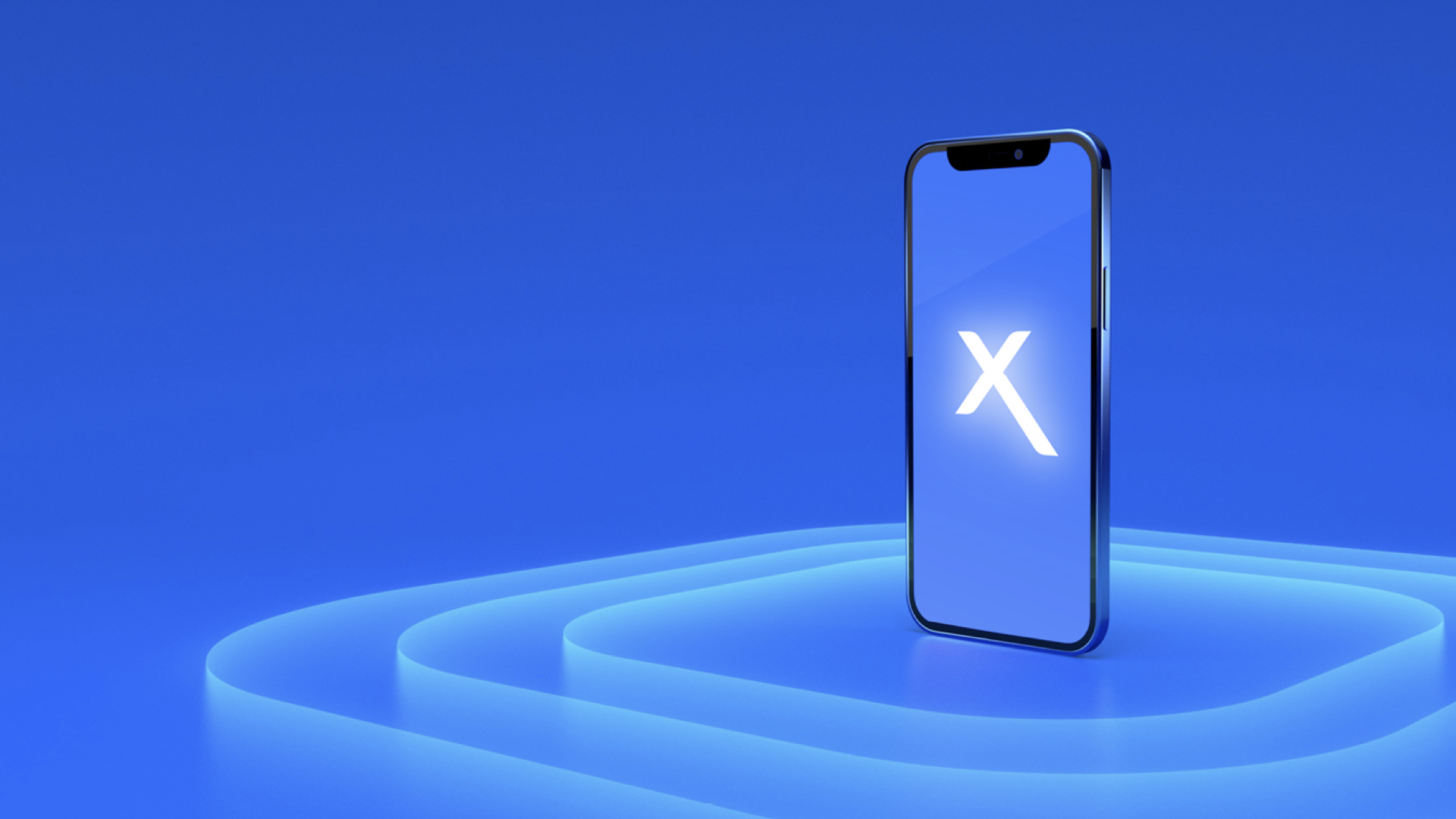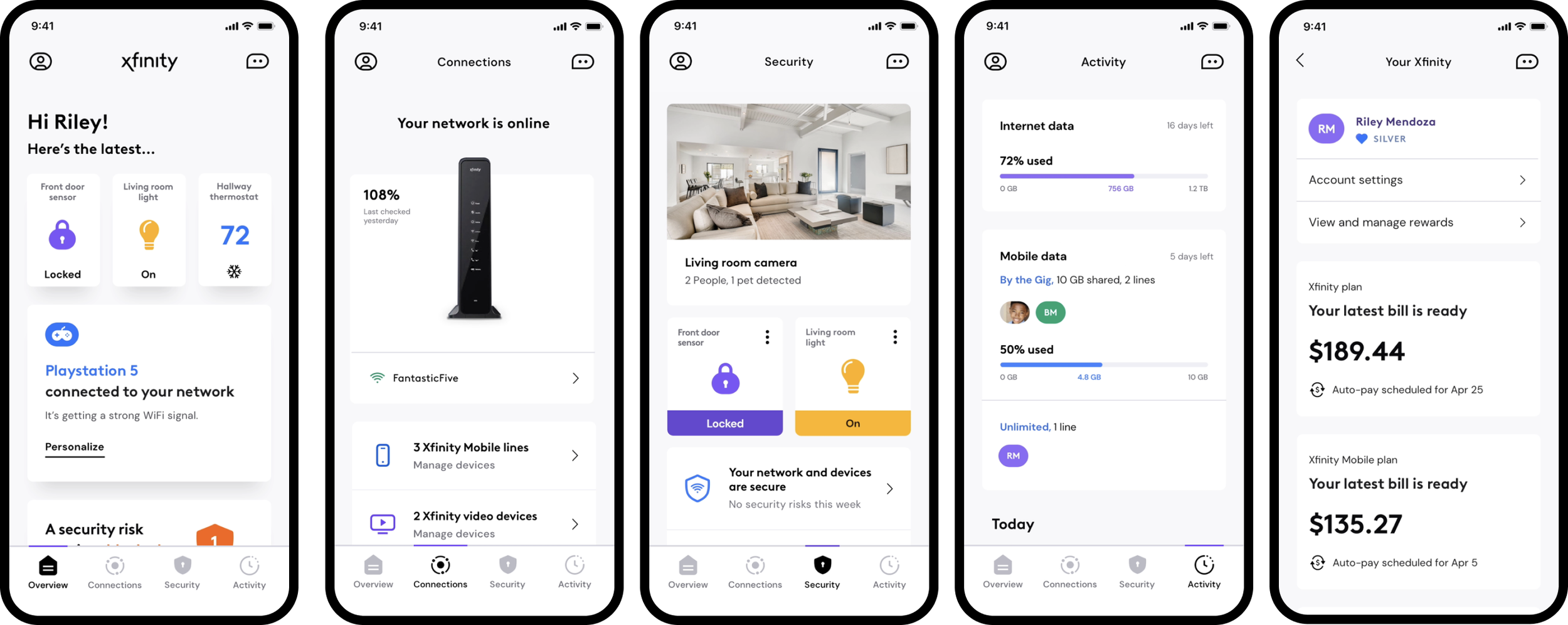
Xfinity app delivery
Evolving from an internet focused application, to the primary touchpoint for the majority of Xfinity journeys
Background
After we successfully presented the App strategy to our leadership and aligned on the path forward, a question remained: How do we start to bring it to life for our customers?
We knew that we’d have to work to align many of the teams working on the app as well as continue to research with our customers to validate. Where the Xfinity app needed to go was far away from where it was, we had to find ways to deliver incremental but complete experiences along the way. This would allow us to ease the customer along and learn from them, while remaining aligned with Business goals and Engineering realities
Below are some key moments in this journey that I was a part of - it’s by no means an exhaustive list - there’s a lot more than just the stories below.
Role
Led a 30 person design team and partners to bring strategy into roadmap work
Partner with Product, Business and Marketing to align and phase out proposition for release
Work closely with Engineering partners to build design language system into App, to allow for transition to new visual language
Work with design SMEs across team to help bring in their experiences into Xfinity app
Ensure cross team working and avoiding silos
Partner closely with Content and UX Research to bring concepts to reality
UX Research & evolving the IA
From the app strategy program, a navigation structure was proposed. As we continued to test and learn, we worked through the IA to balance the aspirations of customers’ needs & business marketing with in-app discovery.
Step 1
Quantative card sort to understand how people organize their needs
Step 2
Natural language survey to understand the value proposition comprehension
Step 3
Multiple tree-jack studies to validate mental models against navigation
Step 4
Usability testing with high fidelity prototype
Application navigation before and after research
MVP & Roadmapping UX
How do we deliver on our new promises? What is the plan to bring this to market? Collaborating across Design, Product, Business and Engineering - we phased out the next few years by quarter, and aligned on what the first moment would be - bringing experiences to an under-represented segment of Xfinity - and evolving the app from what was called xFi to Xfinity
Rebranding
While we were shifting the app to be called Xfinity, the brand of Xfinity was also evolving, We looked for ways to bring this visual language into the app, and align with our value-first content strategy
Inital application experience including first time “value tour” which highlighted the key experiences of the app
Refreshed UX and UI for the main navigation areas, Overview, Connections, Security, Activity and Account
Visual evolution rollout
With the evolving needs of the app, and a refreshed brand design, we had to work out how can we bring this to life in the app, while also managing what’s possible with Engineering timelines. I led and worked collaboratively with my teammates and partners to build out milestones that were realistic from an engineering standpoint yet seamlessly impactful for the customer.
I collaborated across design, product, marketing and engineering to roll out elements that balanced customer experience with engineering capacity.
Security
A key message for our new app was to keep them connected and protected.
Helping keep them connected is easy, but protection or security can be an abstract concept.
People know they want to feel secure, but are unsure how. How can we create an experience that educates the customer and empowers them?
Here, in one of the more challenging updates, we sought to bring disparate experiences across the app into one destination. For each customer, regardless of their service tier, we provided valuable product features.
How the Security tab scaled based on customer package - COAM, xFi, Self Protection and Professional Protection
Syndication
An important business for Xfinity, was taking what they had built and making it available as products to other cable companies.
Keeping those customers in mind as we designed our experiences was key. We need to understand how our customer experiences can be used for other companies and their value propositions. To this end, we worked closely across Sky, Cox, Rogers, Videotron and more.
Some of the partners that we worked with in syndication. Most was a revision of the Xfinity app, where the Sky app needed direct collaboration to get Xfinity features into their application.










